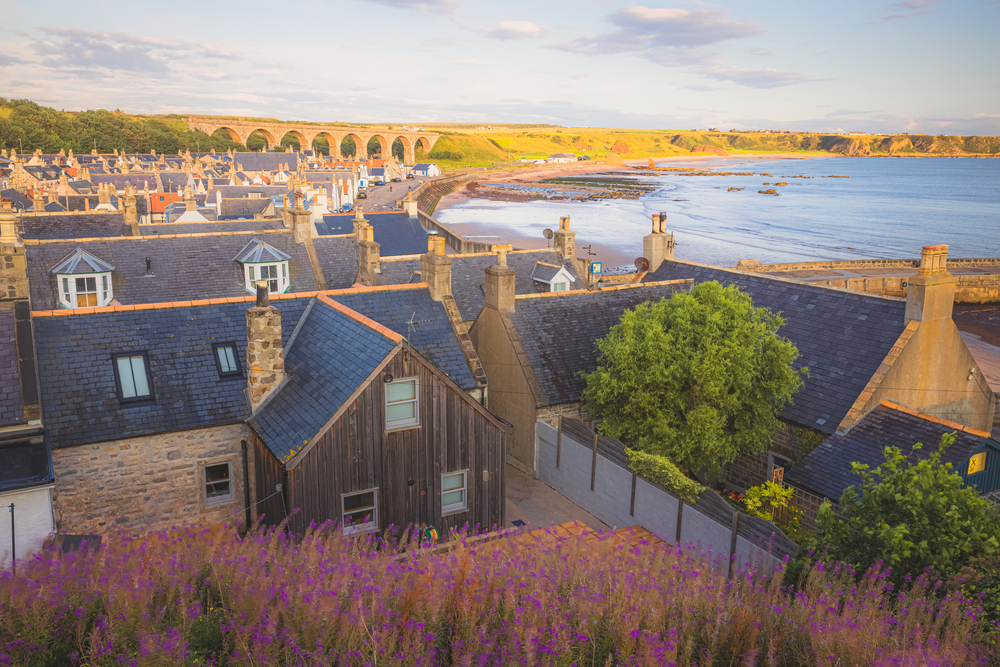House prices may have slumped over the last year but there are certain hotspots in the UK where values have actually increased.
 Halifax, which publishes a monthly house price index as well as providing mortgages, has identified 70 local areas which bucked the national trend with rising property prices.
Halifax, which publishes a monthly house price index as well as providing mortgages, has identified 70 local areas which bucked the national trend with rising property prices.
Locations include Powys in Wales, which has seen the strongest growth in the last year with prices soaring by 17.4%.
East Lindsey in the East Midlands saw the highest growth in England with the average home increasing in value by 13.3%.
Meanwhile, in Scotland, Moray topped the house price hike list, with its homes seeing a typical rise of 10.7%.
These rises have all happened in the same time that prices, UK-wide, have dropped by 3.9% according to Halifax.
Kim Kinnaird, director, Halifax Mortgages, explained how, in some areas, the local picture was so vastly different to the national one.
“There are multiple factors which can impact house prices in your local area,” she said, “ranging from the mix of properties available and the extent of any new housing, to the quality of schools and abundance of job opportunities.
“What’s clear is that the UK housing market is not a single entity that performs in a uniform way across the country, there are differences.
“While at a national level the current squeeze on mortgage affordability has seen property prices fall over the last year, in many regions there remain pockets of house price growth.
“While a limited supply of properties for sale could be a factor, this also suggests in some areas, local market activity – and demand among buyers – remains strong.”
Rural theme – how the countryside is more desirable
One common denominator running through many of the places which have experienced price rises is their situation.
Kinnaird said many benefited from more remote or rural surroundings and incorporated areas of outstanding natural beauty.
“These are traits which continue to be desirable for prospective homeowners, bucking the trend of the wider performance of the housing market,” she added.
Not all areas were rural with some areas of London also featuring in the top ten – Ealing and Westminster/City of London experienced price hikes of 7.5% and 7.4% respectively.
Top ten house price hikes by area (Source: Halifax)
| Local authority area | Nation/region | House price Q3 2022 | House price Q3 2023 | Annual % change | Annual £
change |
| Powys | Wales | £216,307 | £253,958 | +17.4% | £37,651 |
| East Lindsey | East Midlands | £194,533 | £220,421 | +13.3% | £25,888 |
| Moray | Scotland | £162,258 | £179,606 | +10.7% | £17,347 |
| Babergh | Eastern England | £317,383 | £349,965 | +10.3% | £32,583 |
| Sunderland | North East | £138,579 | £150,862 | +8.9% | £12,283 |
| Ealing | London | £494,100 | £531,127 | +7.5% | £37,027 |
| Westminster / City of London | London | £714,242 | £767,350 | +7.4% | £53,108 |
| Bolsover | East Midlands | £167,398 | £179,453 | +7.2% | £12,054 |
| Cumberland | North West | £165,346 | £176,470 | +6.7% | £11,124 |
| Rossendale | North West | £185,658 | £198,102 | +6.7% | £12,444 |
[box style=”4″]
House price hike hotspots
The lowdown on the top three areas experiencing house price rises in the last year – here’s Halifax’s description of each area…

Powys – 17.4% house price growth
The largest but least densely populated county in Wales, Powys is known for its villages and market towns. It features a stunning landscape of valleys and mountains, including most of Brecon Beacons National Park. Newtown, also known as ‘Y Drenewydd’ in Welsh, is the largest town in Powys.
East Lindsey – 13.3% house price growth
Flanking the east coast of Lincolnshire, it’s home to the Lincolnshire Wolds, an Area of Outstanding Natural Beauty (AONB). It also features the award-winning Blue Flag beaches of Skegness, Mablethorpe and Sutton-on-Sea.
Moray – 10.7% house price growth
Again, this is a largely rural area, which features an array of top golf courses and many of Scotland’s whisky distilleries. Also taking in part of the Cairngorms National Park, it’s equally famous for its colony of bottle-nose dolphins living in the Moray Firth.
[/box]














